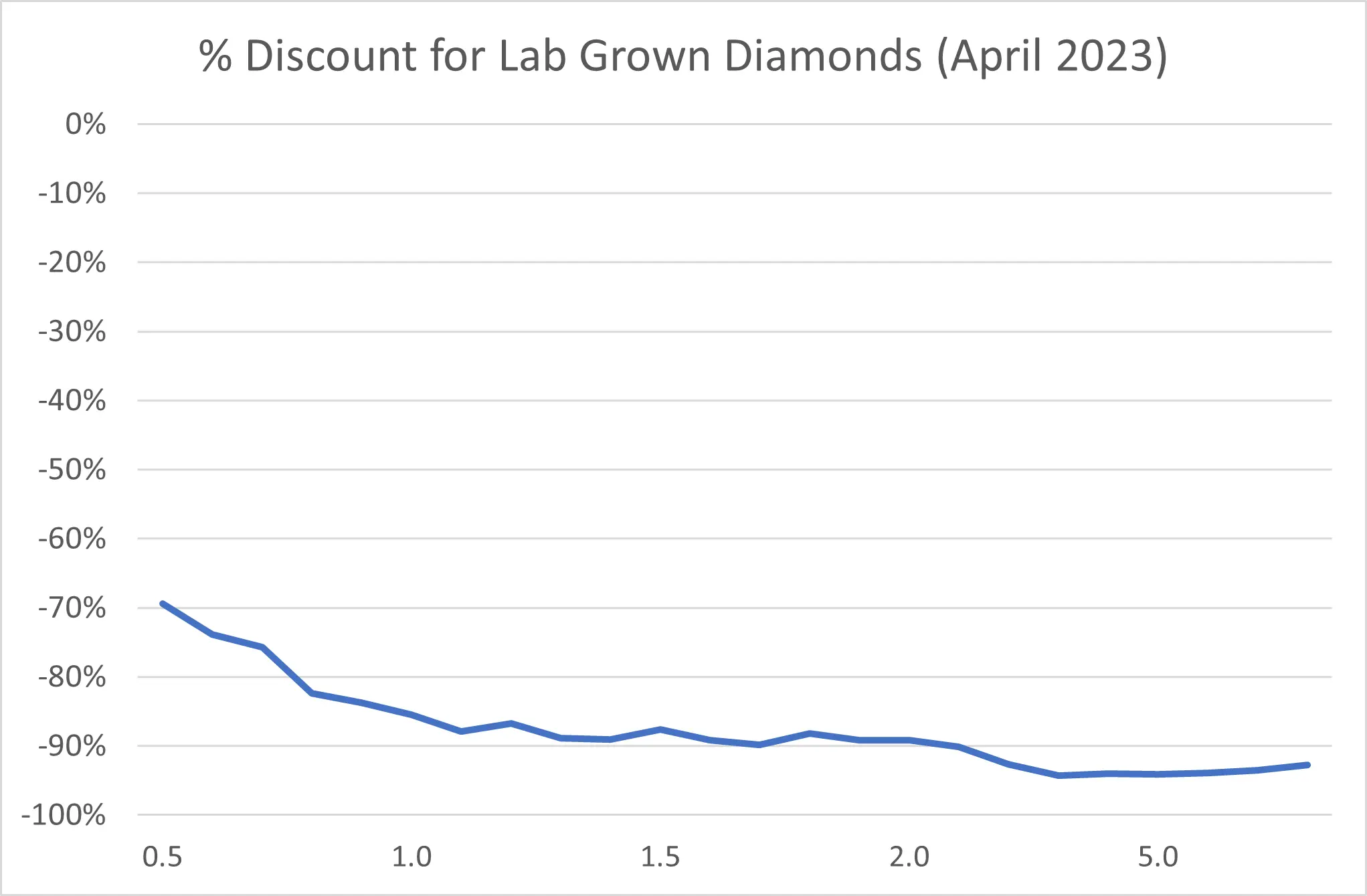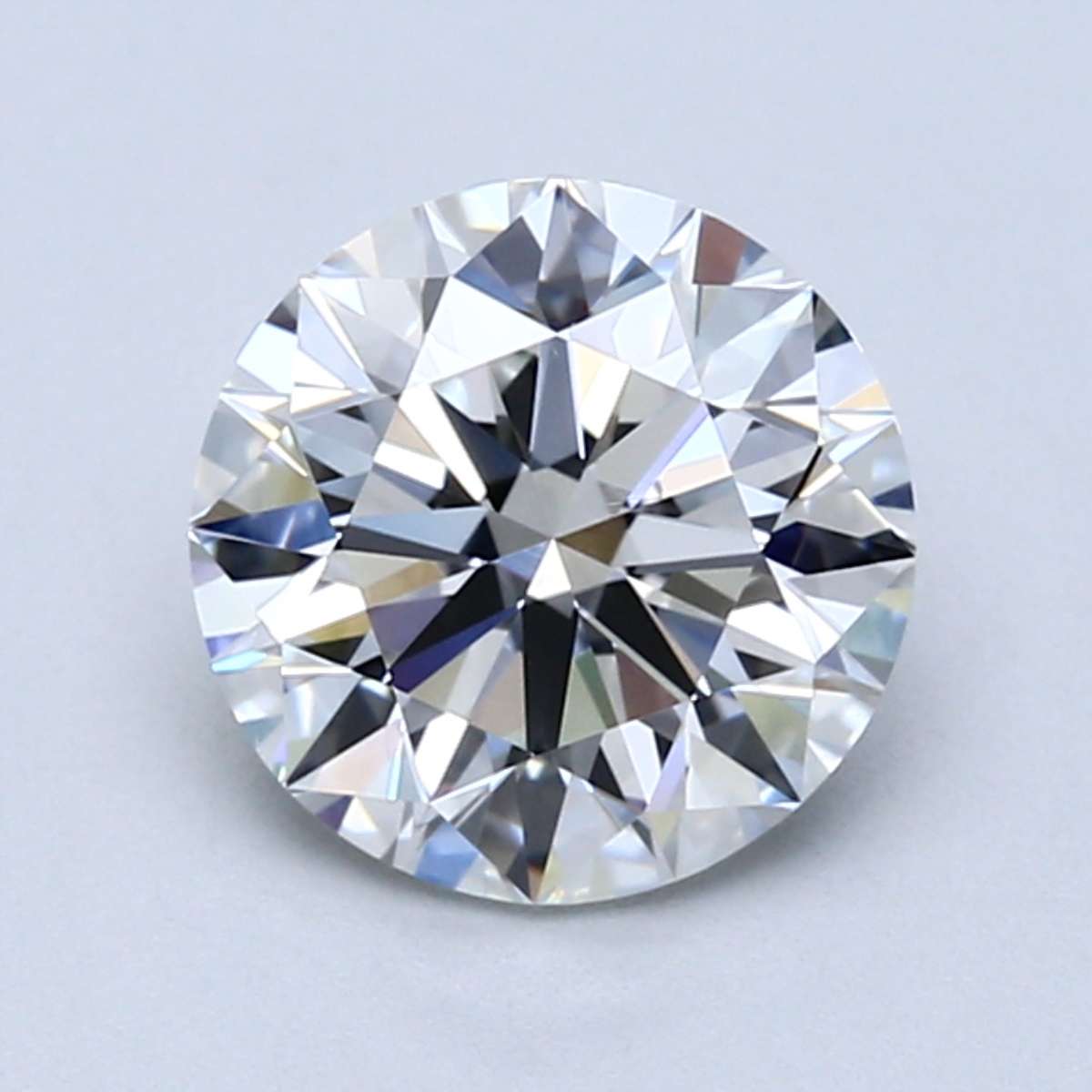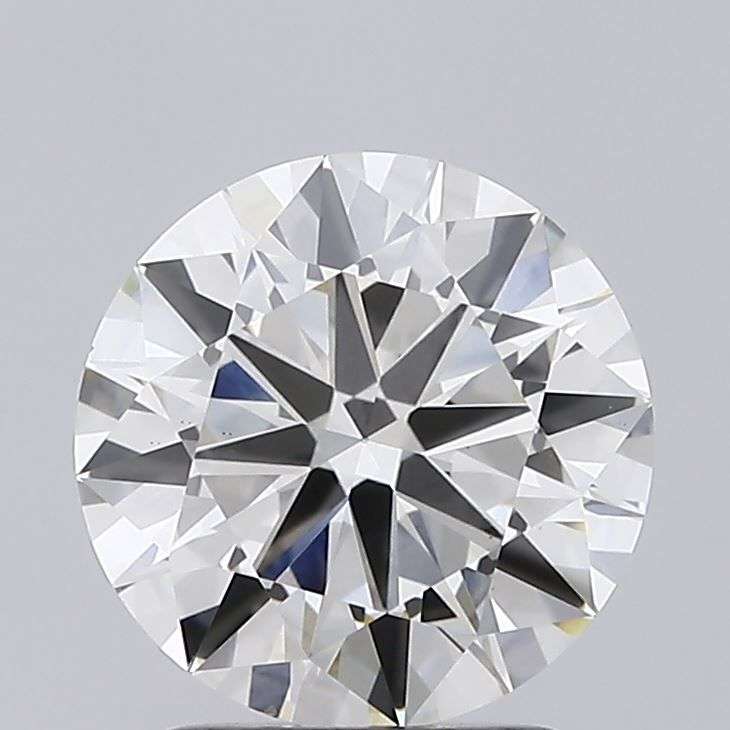March 15th 2023
Lab Grown vs. Natural Diamonds: A Simple Guide for Shoppers
By Devin Jones
If you're looking to buy a diamond, you might be wondering about the differences between lab grown diamonds and natural diamonds. In this easy-to-read blog post, we'll explain what sets these two types of diamonds apart and answer some frequently asked questions.
Pro Tip: Use our diamond search engine to explore the largest inventory of lab and natural diamonds from top-rated jewelers. It's like Zillow, for diamonds.
1. What are Natural Diamonds?
Natural diamonds are formed deep within the Earth over millions of years, and they're billions of years old. Diamonds are made of carbon atoms that have undergone such intense pressure and heat, transforming them into the incredibly hard and beautiful material we currently associate with engagement rings and fine jewelry.
Natural diamonds are typically mined from the ground but can also be collected from the earth's surface or from river beds, though they can only be found in certain places on earth. Natural diamonds are mined or discovered in rough form, and are then cut and polished into the beautiful gem stones you're probably more familiar with.
2. What are Lab Grown Diamonds?
Lab grown diamonds (also known as man made diamonds) are real diamonds made in a laboratory. They're created over weeks or months using advanced technology that replicates the natural conditions under which diamonds form. According to the U.S. Federal Trade Commission, lab grown diamonds are just as real as natural, mined diamonds.
Both natural and lab grown diamonds are made of carbon atoms arranged in a crystal structure, making them one of the hardest materials on the planet. According to The Economist, lab grown diamonds are projected to become a larger percentage of total diamond supply as natural diamond mines are exhausted
3. Man Made Diamonds vs Real Diamonds
Man made diamonds or lab grown diamonds are chemically identical to mined diamonds. However, man made diamonds are grown in a laboratory while mined diamonds are excavated from the earth. When speaking to a retailer about a diamond, it's important to clarify whether you want a lab grown or natural diamonds - since both diamonds are technically real diamonds.
4. Lab Grown vs Natural Diamond Price Difference
The main benefit of lab grown diamonds is their lower price. Lab grown diamonds cost about 90% less than natural diamonds on average, as you can see in the below diamond price table.
| Carat | Natural | Lab | Discount |
|---|---|---|---|
| 0.5 | $1,570 | $480 | -69% |
| 0.6 | $1,965 | $513 | -74% |
| 0.7 | $2,881 | $700 | -76% |
| 0.8 | $3,826 | $675 | -82% |
| 0.9 | $4,982 | $812 | -84% |
| 1.0 | $7,661 | $1,115 | -85% |
| 1.5 | $15,561 | $1,934 | -88% |
| 2.0 | $29,365 | $3,183 | -89% |
| 2.5 | $41,133 | $4,065 | -90% |
| 3.0 | $63,232 | $4,641 | -93% |
| 3.5 | $87,024 | $4,998 | -94% |
| 4.0 | $109,600 | $6,609 | -94% |
| 5.0 | $184,160 | $10,913 | -94% |
| 6.0 | $265,834 | $16,231 | -94% |
| 7.0 | $301,476 | $19,479 | -94% |
| 8.0 | $362,146 | $26,190 | -93% |
Here's a lab vs natural diamond price chart showing how the discount steepens (y-axis) as carat weight increases (x-axis). Both the table and chart show the median prices across 10 online jewelers for Round G VS1 natural & lab grown diamonds as of April 2023.
You can learn more about today's diamond prices using our diamond search engine which aggregates over 2 million natural and lab diamonds from 10 top online jewelers including Blue Nile.
5. How to Tell Lab Grown and Natural Diamonds Apart
While most people assume there's some sort of visual difference between the two, lab grown diamonds and natural diamonds look completely identical because they are both diamonds.
Below are two 2 carat G VS1 diamonds. Can you tell which one is lab grown?
The 2 carat natural diamond is worth $28,000 while the 2 carat lab grown diamond is worth $3,100, or roughly 90% cheaper.
The best way to know if a diamond is natural or lab grown is to check its grading certificate by using a diamond certificate check tool. Reputable organizations like the GIA, IGI, or GCAL issue these certificates and use expensive machines like the one below to test whether a diamond is natural or lab grown.
The machine tests for trace elements common to the lab growing process but rare in natural diamonds. If you're offered a diamond that doesn't have a certificate, ask that the diamond be certified to make sure it's authentic.
6. Are Lab Grown Diamonds Flawless?
Lab grown diamonds, like natural ones, come in different colors, clarity grades, and cuts. They even have similar inclusions, meaning they could be completely flawless or very heavily included (flawed).
Gemological labs like the GIA and IGI grade lab grown diamonds based on clarity just like they do natural ones, so you can tell how flawless or flawed a diamond is without pulling out your handy microscope.
7. StoneAlgo's Cut Score and Visual Carat for Lab Grown Diamonds
Yes, our Cut Score is available for round lab grown diamonds, and the Visual Carat is available for all 10 shapes we carry.
8. Strength and Durability
Lab grown diamonds are as strong, durable, and hard as natural diamonds. Both types are made of the same crystal structure, making them some of the hardest materials on Earth.
9. Environmental and Social Considerations
The choice between natural and lab grown diamonds depends on individual values and priorities. Both options have their own advantages and disadvantages in terms of environmental impact and social consciousness.
In terms of environmental impact, lab grown diamonds are generally considered to be more environmentally friendly than natural diamonds, though the growing process does require significant energy expenditure. The mining of natural diamonds can cause significant damage to the environment, including deforestation, soil erosion, habitat destruction, and pollution of waterways and air quality. In contrast, lab grown diamonds have a much smaller environmental footprint because they do not require mining.
In terms of social consciousness, both natural and lab grown diamonds have their own issues. While the mining of natural diamonds can contribute to social and human rights concerns, such as dangerous working conditions, inadequate wages, and child labor, the production of lab grown diamonds also raises concerns about labor conditions and the use of energy to create the high temperatures and pressures necessary for diamond growth.
Since 2003, the Kimberley Process Certification Scheme (KPCS) has required that all natural diamonds be certified as conflict-free before they can be exported or imported by participating countries. Today, natural diamond mining is better known for providing economic benefits to nearby communities, creating jobs and supporting local businesses.
Ultimately, choosing between natural and lab grown diamonds depends on individual priorities and values. Some consumers may prioritize the environmental benefits of lab grown diamonds, while others may prioritize supporting responsible mining practices and the communities that rely on diamond mining. It is important for consumers to do their research and choose a supplier that aligns with their values and priorities.
10. Value Retention and the Resale Market
One important aspect to consider when choosing between lab grown and natural diamonds is value retention. Natural diamonds have a long history of retaining their value over time, making them a more popular choice for those looking at their purchase as an investment. In the resale market, natural diamonds tend to maintain a higher percentage of their original value compared to lab grown diamonds.
Lab grown diamonds have been decreasing in price over the years due to advances in technology and increased production. As a result, they tend to resell for a smaller fraction of their original value compared to natural diamonds. This is an important factor to consider if you plan on reselling your diamond in the future. If you're interested in learning more about diamond re-selling, check our our Guide To Selling A Diamond.
Natural vs. Lab Grown Diamonds: Which One Should I Choose?
The major difference between natural diamonds and lab grown diamonds is that while while natural diamonds cost more, they maintain their value better, while lab grown diamonds have been seen their prices decrease consistently over time. Lab grown and natural diamonds each have their unique features and benefits. Lab grown diamonds are more affordable and often more eco-friendly, while natural diamonds offer economic support to mining communities and better value retention. By understanding the differences, you can make an informed choice that suits your needs and values. Don't forget to use our diamond search engine to find the perfect lab grown or natural diamond from top online jewelers.




